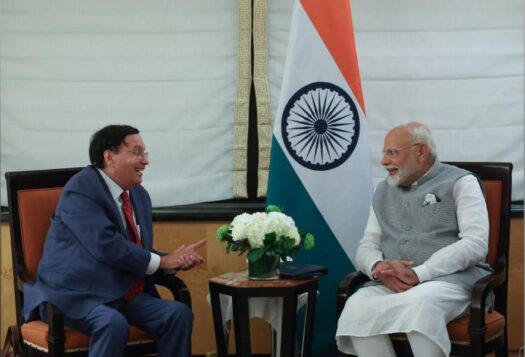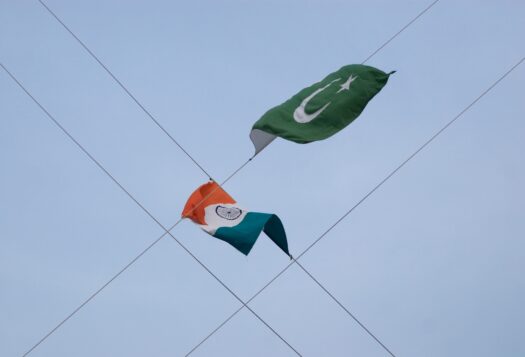
Conceptually crafting a strategy for South Asian deterrence stability is to understand that (primarily) escalation control is interdependent with deterrence stability—that is, escalation control may not occur without the possible application of deterrence stability. And deterrence stability requires a conducive, peaceful, stable, and balanced strategic environment between the two states, especially when they are in possession of nuclear weapons, albeit with differences in their doctrinal postures.
Escalation is a complex phenomenon. The tactics for escalation from one side to put pressure on the other, aimed at winning certain political and military objectives, are obviously a dangerous game. According to international relations theory, the rational actors in possession of nuclear weapons should always desire to opt for deterrence stability, which would promote escalation control. The strategy for escalation control is treated differently in international politics than the game of “chicken.” Talks for peace and stability can be initiated among rational actors to control escalation in a crisis, as long as the strategic environment is balanced and conducive to them – thereby promoting deterrence stability.
The Case for an Arms Control Regime
Although India and Pakistan have not fought a major war since the arrival of nuclear weapons (due to the fear of a major military escalation to the nuclear level), this does not assure the certainty of deterrence stability or prove nuclear weapons to be the panacea for all problems, as the United States believed during the years of its nuclear monopoly from 1945 to 1949. There is no single solution – rather, South Asian deterrence stability needs consistent and varied combinations of strategies that would not only create a stable strategic environment, but also broadly encourage states’ leadership to promote deterrence stability. More research is needed in this domain. The South Asian region requires a fresh breakthrough and rational approaches to understand the emergence of different strategic crises and help to resolve them systematically. These variables may conceptually differ from each other, but they may be assumed to be interconnected; each one of these strategic variables aims at promoting deterrence stability.
India, Pakistan, and China could take measures to establish an Arms Control Regime (ACR) in the South Asian region. Both India and Pakistan have made some progress towards an agreement on some Confidence Building Measures (CBMs) and Nuclear Risk Reduction Measures (NRRMs), but there has been less talk on the creation of an ACR. Unlike the superpowers (i.e. the Soviet Union, now Russia, and the United States), who were successful in crafting a strategic partnership in terms of limiting their strategic forces during the peak of the Cold War, neither the South Asian nuclear weapons states nor China have crafted a strategy regarding the successful implementation of an ACR. Such a strategy would enable China, India, and Pakistan to utilize restraint and slow down the arms competition in the region. A strategic approach of graduated response measures may be needed given the complex issues of Kashmir and terrorism. That said, both India and Pakistan might begin by resolving fewer complex issues and gradually move to the ultimate resolution of bigger issues under a friendlier political and diplomatic environment.
The South Asian region carries the potential for the establishment of an ACR, possibly in the near future, given the essential commonalities among the members of the nuclear triangle (China, India, and Pakistan). China has nuclear weapons. It has not further tested its nuclear weapons. It follows minimum deterrence. It has a policy of assured retaliation—that is, China would not be the first to use nuclear weapons. China is not engaged in an acute arms race in the region, unlike the dynamic between the Soviet Union and the United States during the Cold War. China has been trying to settle down its border issues with Russia and India, and has largely focused on its domestic, regional, and international economic development. However, China is continuing to modernize and develop some of its forces to prepare for an unpredictable and uncertain world, particularly, as assumed in the United States, that China’s rise is a potential threat to the United States and its interests in Asia.
Neither India nor Pakistan has subsequently tested nuclear weapons since the 1998 nuclear weapons tests. Both states follow policies of minimum credible deterrence. Although the word minimum is very innocuous, it is not a fixed term. It has hard to define what minimum could be. It changes in accordance with the changed strategic environment. Apparently, both India and Pakistan keep the word minimum open for various interpretations. Like China, India follows the policy of assured retaliation, and thus India officially would not use nuclear weapons first. However, since the 2003 policy draft, India seems to have departed from such a policy orientation. On the other hand, Pakistan relies on nuclear weapons slightly more than India because it considers itself to be strategically smaller and conventionally weaker vis-à-vis its adversary. Since the core issue of Kashmir, along with many other outstanding issues, has yet to be resolved, and since both India and Pakistan have a conflicting history, South Asia is a conflict-ridden region. As a result, the arms race has continued and many in the international community consider South Asia to be an increasingly unstable region. Contrary to these critical episodes, the commonalities between the nuclear weapons states in South Asia should not be sidelined. These commonalities promote the possibilities for establishing an ACR in South Asia, which could ensure deterrence stability.
Challenges to an ACR
In the contemporary world, the creation of an ACR may require some essential ingredients before it can be expected to boost deterrence stability and promote escalation control. First, the creation of an ACR may not be possible, as both India and Pakistan are in the embryonic stages of their nuclear development. Unless they are out of initial stages of nuclear development, which may include second-strike capability, sophisticated delivery systems, and maturing the security and safety force infrastructure, efforts for an ACR could remain in doldrums.
Second, there is a growing force disparity in terms of conventional weaponsbetween India and Pakistan, which encourages Pakistan to sustain a particular level of deterrent capability. Both sides may require some level of deterrent force parity before they conclude an ACR discussion. The South Asian region must pass through critical learning stages – as the United States and Soviet Union did during the Cold War period, though the strategic environment is different and all the Cold War nuclear strategies may not necessarily be applicable in the South Asian region.
Third, states’ war-like doctrinal postures have strategic implications. Despite the understanding that too much openness could undermine the credibility of a state’s deterrent, particularly when it is conventionally weak and geographically smaller, there is still a need for some sort of transparency in nuclear policy, if not complete openness, which in turn could help build a stronger framework for an ACR. Ironically, Pakistan has been pulled into the South Asian arms race because of Indian doctrinal and force posture developments. The dramatic shifts in both the strategic and conventional deterrent forces of one side would have implications on the other, which keeps the clock of the arms race ticking. Resultantly, this places significant pressure on South Asian deterrence stability.
A Role for Major Powers?
The role of major powers, particularly of the United States, has become more important than ever before given the complexity of deterrence instability and increasing conventional force disparity. The conflicting inter-state rivalry still exists despite the arrival of nuclear weapons. In this context, the role of major powers may not altogether be sidelined.
First, because of their own political, economic, and geopolitical interests, the major powers may play a significant role in defusing future crises in South Asia. For example, the United States played a crucial role in the 1980s, 1990s, and even 2000s in averting crises between India and Pakistan when observing closely the danger of major military confrontation in the presence of nuclear weapons capabilities. The timely intervention of the United States helped avert escalation in South Asia. Major powers’ roles may still be constructive in averting nuclear Armageddon. They can encourage both India and Pakistan to pursue certain CBMs and NRRMs for sustaining deterrence stability.
Second, due to South Asia’s conflicted past, the widening gap in conventional forces, and the arrival of nuclear weapons, the great powers can play a crucial role in terms of discouraging states from taking sides and supporting one at the expense of other. The contemporary discriminatory treatment of the South Asian regionhas left one state vulnerable to another. This has increased the arms race in the region, and as a result has weakened deterrence stability. The stronger side, with a greater conventional force capability, may threaten the territorial integrity of the weaker side. The conventionally weaker side is left with two options for survival. One, it can follow a catalytic doctrinal posture—that is, to seek the third party patron-ship who will intervene just before the crisis becomes uncontrollable. Two, it can adopt an asymmetric escalation posture—that is, to rely on the first use of nuclear weapons, offsetting the mightier conventional side (or more on this, see Nuclear Strategy in the Modern Era, by Vipin Narang).
Third, there is yet another role that major powers may play that could have positive implications for the South Asian region. To understand this, we need to understand the extra-regional link factor that affects India and Pakistan. In this case, whatever happens between the United States and Russia and/or between the United States and China would affect China, which would in turn affect India. Arguably, India’s actions would then affect Pakistan. The economically weaker state (in this case Pakistan) suffers the most in an arms race. The arms reduction and policy restraint at the top trajectory reduces the pressure on the lower trajectory. Also, since the major powers would like to include smaller powers in terms of meeting the pledges of the nonproliferation regime, the major powers may need to reduce their deterrent forces to the level of smaller powers. This would promote deterrence stability amongst nuclear weapons states. Moreover, the conceptual framework could then be crafted for a universal arms control regime. However, if the major powers believe that they could retain their deterrent forces as long as nuclear weapons exist, then this may convey a clear message to others to retain their deterrence forces without becoming part of the game. And the South Asian region becomes one of those regions.
***


